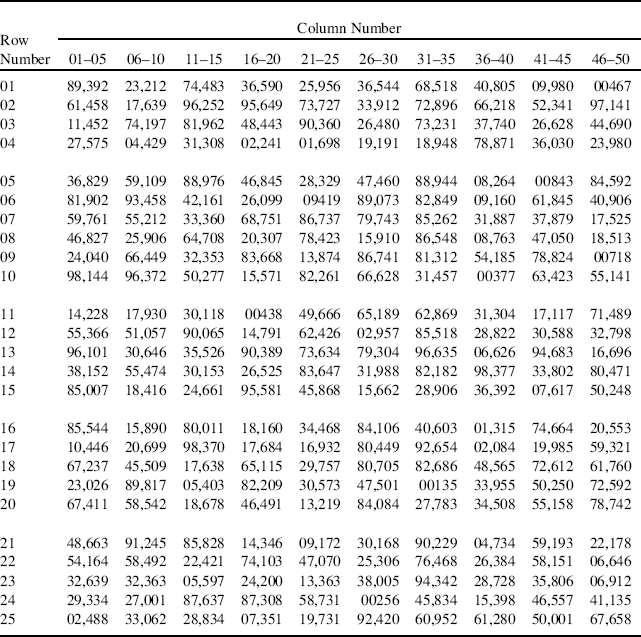Appendix 7.A Using a Table of Random Numbers
Suppose our objective is to obtain a simple random sample of size n from a population of size N. One way to accomplish this task is to write the name of, say, each person in the population on a slip of paper (or if the elements of the population are not people, we can label each element using some identifier) and then “randomly” draw n slips of paper out of a container. While this process might be legitimate for small populations, it would certainly be unworkable for large ones. An alternative to this procedure is to employ a table of random numbers (Table 7.4).
Table 7.4 Random Numbers.

Let the population consist of N = 10 items and suppose we want to select a random sample of size n = 4. In this instance, we need to use the single digit code 0, 1, 2, . . . , 9. Given these 10 digits, we now go to the population and arbitrarily tag each of its members with one of them. (Note that this procedure presupposes that we have at our disposal a sampling frame or list of items in the population.) We next consult our random numbers table (remember that under simple random sampling we always sample without replacement) and choose an arbitrary starting point. For instance, let us start at row 03 and column 25. We thus have our first random digit, namely “0”. Moving down this column from the value 0, we next encounter “8” (our second random digit) ...
Get Statistical Inference: A Short Course now with the O’Reilly learning platform.
O’Reilly members experience books, live events, courses curated by job role, and more from O’Reilly and nearly 200 top publishers.

